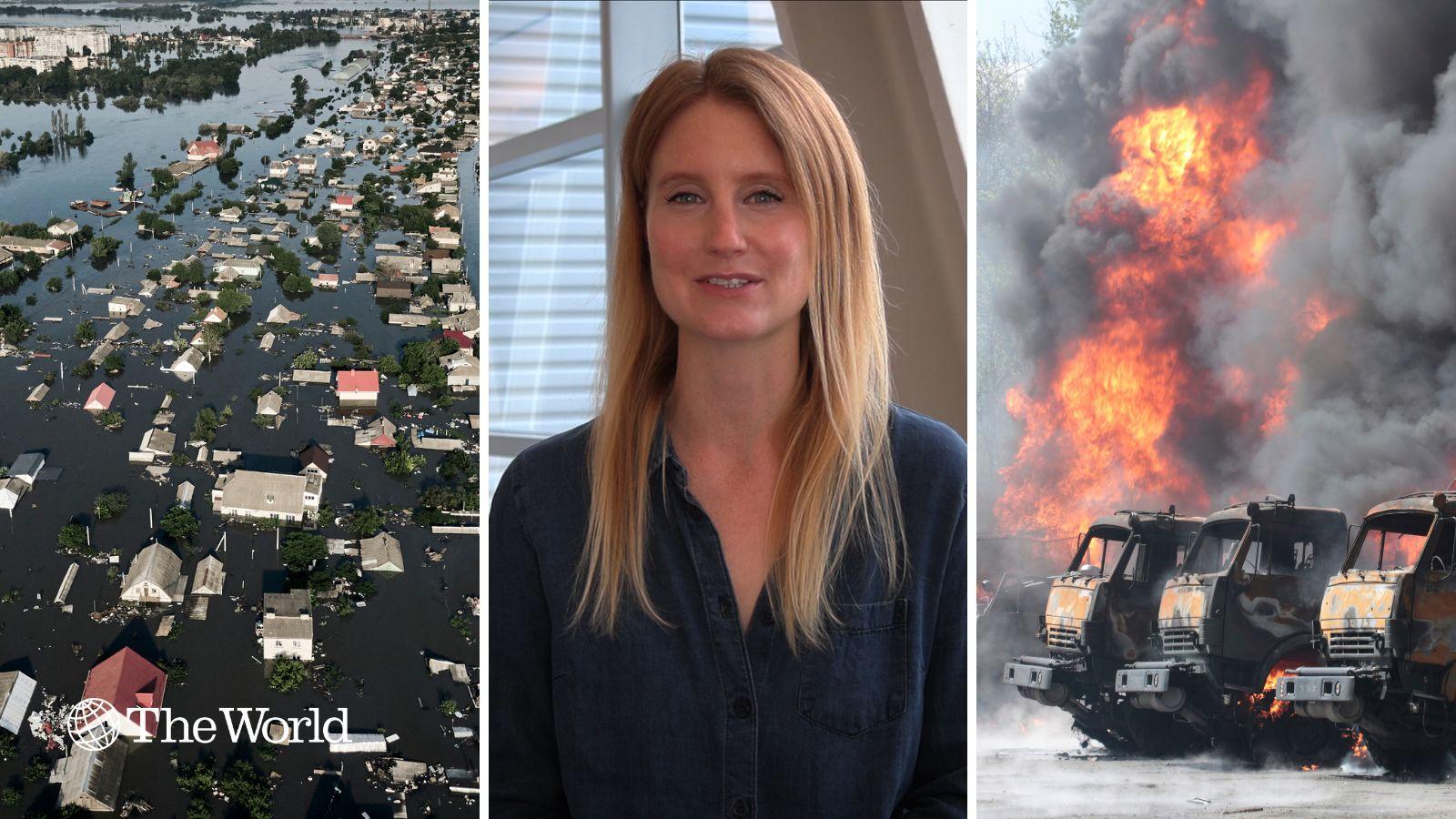Left to right: Streets are flooded in Kherson, Ukraine, Wednesday, June 7, 2023 after the walls of the Kakhovka dam collapsed; Screen shot form video; Vehicles on fire at an oil depot after missiles struck the facility in an area controlled by Russian-backed separatist forces in Makiivka in eastern Ukraine on May 2022.
The costs of the war in Ukraine can be measured first and foremost in human lives lost, in destroyed communities and infrastructure.
But environmental damages are also widespread and will continue to impact Ukrainians for decades to come.
In early June 2022, the Kakhovka Dam on the Dnipro River burst, unleashing much of the water from a reservoir roughly the size of the Great Salt Lake in Utah. Large swaths of the reservoir dried up, while towns and villages south of the dam were flooded. Floodwaters contaminated with sewage, oil and land mines swept away houses and forced evacuations.
This incident sparked global attention on the environmental impact of the war for the first time.
But damage to the environment has been ongoing since February 2022, when the full-scale invasion started.
In the video above, The World’s Carolyn Beeler explains how the war has impacted the environment in Ukraine.
Related: A coalition of Ukrainians is documenting environmental crimes
Old-school trench warfare along the front lines has torn up forests and triggered fires.
Industrial sites and oil depots have been bombed and destroyed, sending contamination into the soil and groundwater.
Damaged wastewater and sewage facilities have contaminated drinking water, while mines and unexploded ordinance have rendered agricultural land unusable.
Beeler also speaks about the effort by the Ukrainian government and local nongovernmental organizations to document the damage.
Related: Farmland off-limits in Ukraine due to mines
The World is an independent newsroom. We’re not funded by billionaires; instead, we rely on readers and listeners like you. As a listener, you’re a crucial part of our team and our global community. Your support is vital to running our nonprofit newsroom, and we can’t do this work without you. Will you support The World with a gift today? Donations made between now and Dec. 31 will be matched 1:1. Thanks for investing in our work!
